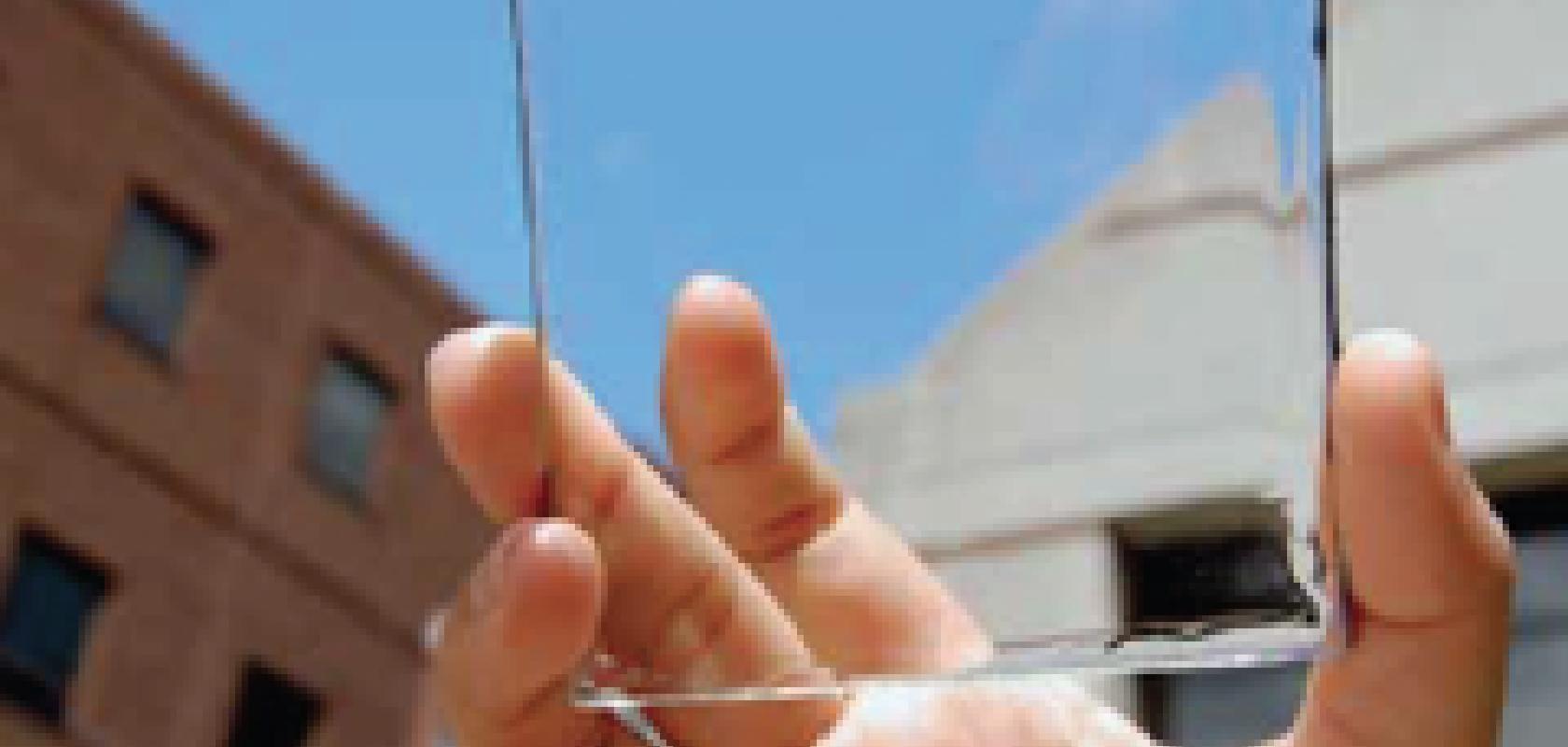Scientists from Michigan State University have developed a transparent solar concentrator that can be used on anything with a clear surface – from windows and sun roofs to smart phone screens. By developing a new material which only absorbs light from UV and infrared wavelengths, and not from the visible part of the electromagnetic spectrum, the university team was able to produce a device that is transparent to the human eye.
The research follows other projects that have developed similar transparent materials for solar energy production, including one that can be sprayed onto surfaces.
The transparent luminescent solar concentrator, which was described recently in Advanced Optical Materials, employs small organic molecules to absorb the specific non-visible wavelengths of sunlight. ‘We can tune these materials to pick up just the ultraviolet and the near infrared wavelengths that then “glow” at another wavelength in the infrared,’ said Richard Lunt, assistant professor of chemical engineering and materials science at MSU’s College of Engineering. ‘Because the materials do not absorb or emit light in the visible spectrum, they look exceptionally transparent to the human eye.’
The ‘glowing’ infrared light is then transferred to the edge of the plastic, where it is converted to electricity by thin strips of photovoltaic solar cells.
Other university teams are also researching how to harvest the sun’s energy with transparent materials. In 2012, the UK’s Oxford University developed semi-transparent solar cells using perovskite, a mineral-like crystalline material that has recently shown great promise for photovoltaics. However, because the efficiency of the cells was shown to decrease as the transparency increased, the final solar concentrator had a grey tint and was not completely transparent. Nonetheless, spin-out company Oxford Photovoltaics was created in to improve and commercialise the technology by 2017.
And, in 2013, researchers from the University of California, Los Angeles (UCLA) developed a near-transparent film that can be sprayed onto clear surfaces to harvest sunlight. The device consists of two thin polymer solar cells that contain an infrared light-sensitive polymer, which converts infrared light into an electric current.
This creation absorbs around 80 per cent of infrared light but is not 100 per cent clear, as it absorbs a small amount of visible light as well. But, by absorbing in the visible part of the spectrum, the efficiency is significantly increased, and the cell demonstrated over seven per cent energy production efficiency last year. The scientists believe this technology will also be commercialised in the next few years.
MSU’s new system, however, is completely transparent, which makes a huge difference if it is to be used in everyday applications, according to Lunt: ‘No one wants to sit behind coloured glass. It makes for a very colourful environment, like working in a disco. We take an approach where we actually make the luminescent active layer itself transparent.’
Although still in the early stages, in the future the MSU technology has the potential to be scaled to commercial or industrial applications with an affordable cost. ‘It opens a lot of areas to deploy solar energy in a non-intrusive way,’ explained Lunt. ‘It can be used on tall buildings with lots of windows or any kind of mobile device that demands high aesthetic quality like a phone or e-reader. Ultimately, we want to make solar harvesting surfaces that you do not even know are there.’
The next stage for the scientists is to improve the energy-producing efficiency. The system can currently generate a solar conversion efficiency of almost one per cent, according to Lunt, but the team are now aiming to improve that figure to five per cent. The best coloured transparent solar cell has an efficiency of approximately seven per cent.


